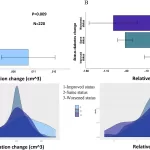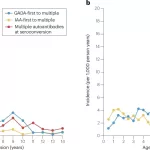Researchers identify key protein interaction, raising awareness about zoonotic risk of arteriviruses
Scientists have made a breakthrough in understanding how arteriviruses, a family of viruses that infect various mammals, could potentially infect humans. This new study, published in Nature Communications, identifies the neonatal Fc receptor (FcRn) as a crucial protein enabling arterivirus entry into host cells. The findings shed light on the virus-host interactions that could facilitate a spillover of these viruses from animals to humans.
Understanding Arterivirus Hosts and Mechanisms of Infection
Arteriviruses are known to circulate widely among mammals, including nonhuman primates, pigs, and horses, which serve as their natural hosts. Notably, these viruses have not yet been detected in humans. However, given the history of other zoonotic viruses that have made the jump to human hosts, researchers are keen to understand any factors that could influence the zoonotic potential of arteriviruses.
The study’s co-lead authors, Dr. Cody Warren from The Ohio State University and Dr. Adam Bailey from the University of Wisconsin-Madison, emphasized the importance of understanding how these viruses might interact with human immune systems. Dr. Warren noted that because no known arteriviruses currently infect humans, people are “essentially immunologically naïve,” meaning there is no pre-existing immunity that could offer protection in case of a spillover.
CRISPR Screening Identifies Key Proteins in Infection Process
The research team used CRISPR genome-wide screening technology to pinpoint specific genes that are critical for arterivirus infection. This screening revealed two key genes, FCGRT and B2M, which code for the protein components of the FcRn receptor. The FcRn receptor is known for transporting antibodies across the placenta but is also present in immune cells and blood vessel-lining cells—two cell types targeted by arteriviruses.
The study demonstrated that FcRn acts as a gateway for arteriviruses to enter host cells, as seen in various arteriviruses infecting monkeys, pigs, and horses, including the porcine reproductive and respiratory syndrome virus (PRRSV-2) and equine arteritis virus (EAV). Disrupting the FCGRT gene blocked viral entry, and pretreatment with an existing monoclonal antibody against FcRn protected cells from infection.
Species-Specific Receptor Variability as a Barrier to Spillover
Interestingly, the study found that some mammals’ FcRn receptors possess minor genetic differences that reduce their susceptibility to arteriviruses. This variability among species-specific FcRn receptors may act as a natural barrier to cross-species transmission, highlighting the complexity of predicting zoonotic events.
Despite these barriers, arteriviruses have a unique ability to establish long-term infections, which can become more virulent and transmissible when they switch hosts. This adaptive potential underscores the importance of understanding their biology.
Potential Therapeutic Insights and Pre-Pandemic Preparedness
According to Dr. Bailey, identifying these receptor interactions is crucial for preemptive public health strategies. “If one of these viruses emerged in humans, I believe we’d be in big trouble,” he said, highlighting the urgency behind such research. This study also suggests a potential therapeutic route: using antibodies to block the FcRn receptor, thereby preventing arteriviruses from initiating infection. The team is hopeful that these findings will aid in developing treatments to stop arteriviruses and similar pathogens if a spillover event occurs.
Research Support and Collaborative Efforts
The study received support from several institutions, including the National Institutes of Health, the University of Wisconsin-Madison, the G. Harold and Leila Y. Mathers Foundation, and the Burroughs Wellcome Fund. Co-authors on the project included scientists from multiple institutions, reflecting a collaborative effort to understand zoonotic risks in arteriviruses.
Looking Forward: A Zoonotic Spillover Awareness
As researchers work toward better understanding and preparing for potential spillovers, the identification of FcRn as an entry point for arteriviruses marks a milestone. By uncovering the proteins that facilitate viral infection across species, scientists are developing tools that may one day be used to prevent future zoonotic events, potentially averting another global health crisis.











